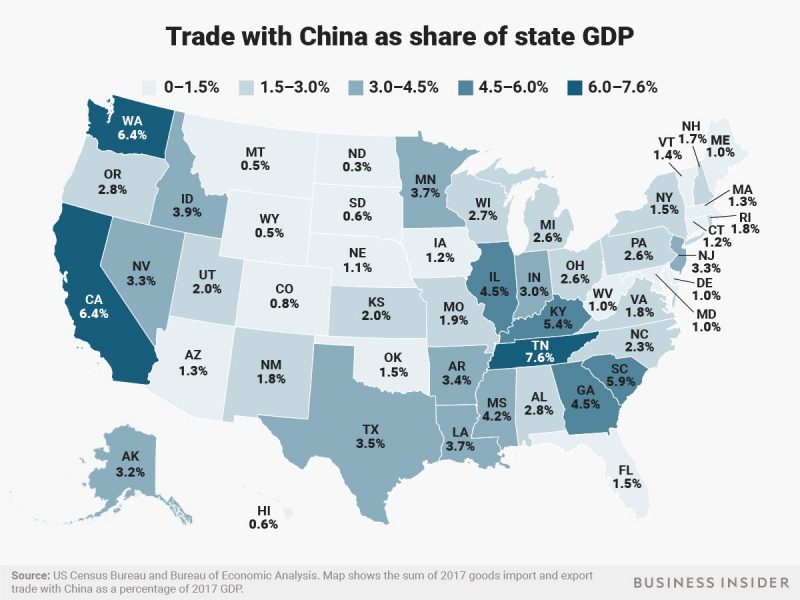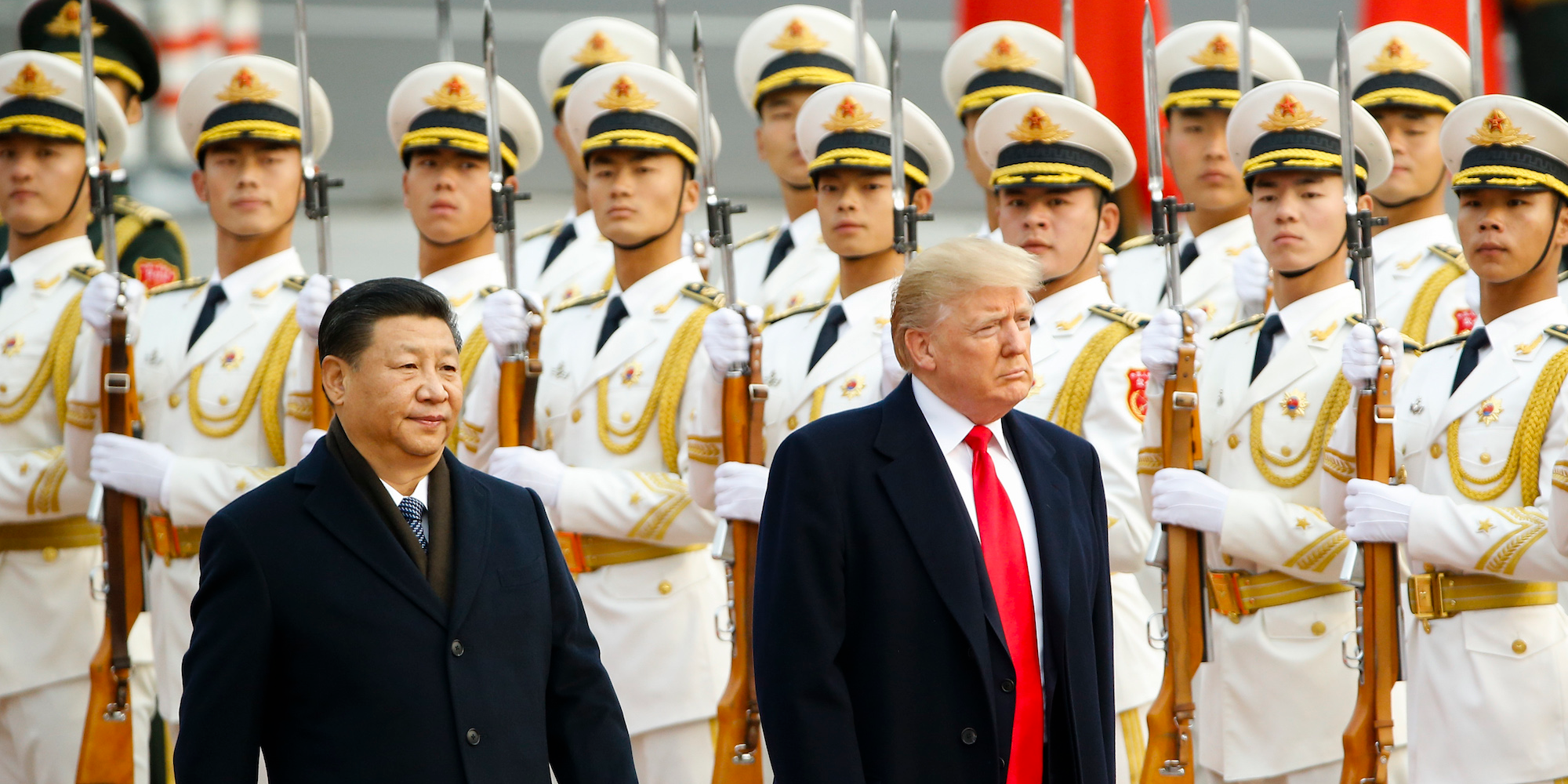- Thursday may be the most important day so far in the burgeoning trade war between the US and China.
- It marks the end of a consultation period on the imposition of a new round of US tariffs on China.
- The tariffs could be set as high as 25% on as much as $200 billion worth of Chinese goods.
- Beijing has already threatened to retaliate, which would almost certainly lead to another escalation from Washington.
- The endpoint of the tariff tit-for-tat would be tariffs on all $505 billion worth of goods the US imports from China annually.
Thursday marks perhaps the most important day so far in the burgeoning trade war between the US and China, as a consultation period over the imposition of fresh tariffs on China by the Trump administration comes to an end.
The US has been deciding whether to place new tariffs on as much as $200 billion worth of Chinese goods coming to the US. President Donald Trump, who is spearheading the trade war, is believed to be pushing for the imposition of the tariffs.
The tariffs, which function as taxes on imports, could be set at a level of 10% or 25% depending on the recommendation of the United States trade representative.
The new tariffs, affecting roughly 40% of all Chinese exports to the US, would mark the biggest escalation of the trade conflict so far and would be almost guaranteed to lead to retaliatory tariffs from the Chinese government.
Beijing has already threatened to impose tariffs on $60 billion worth of US goods in response, and on Thursday morning it reiterated this stance with the Ministry of Commerce spokesman Gao Feng telling reporters that China "will have to retaliate" if the US levies more tariffs.
Chinese retaliation would most likely push the Trump administration to consider moving toward the president's ultimate threat: tariffs on all goods coming in from China.
Trump has made such a threat previously, telling CNBC in an interview in July that he was "ready to go to 500." The "500" figure alludes to the roughly $500 billion of Chinese goods imported by the US in 2017.
US Census Bureau data put the official figure at $505 billion.
"I'm not doing this for politics - I'm doing this to do the right thing for our country," he said at the time. "We have been ripped off by China for a long time."
Such a move would effectively end the tit-for-tat tariff battle between the two nations, as Chinese imports from the US are a comparatively small $129.9 billion.
Economists say tariffs on all goods between the two countries would result in substantial price increases for US businesses and consumers. Such a huge trade war would also drag on US economic growth and, most likely, wider global growth.

As the Trump administration's decision on a fresh round of tariffs looms, there is further evidence that US trade disputes are already causing major issues globally, with officials from German industry on Thursday blaming a fall in activity in the country's factories at least partly on the trade conflict.
"Order intake in the manufacturing sector has slowed noticeably since the beginning of the year after a very dynamic second half of 2017," the German economy ministry said after data showed the amount of orders for German goods falling 0.9% last month.
"The worldwide uncertainty caused by trade conflicts probably played a role here," the ministry added.
It is unclear when a decision on fresh tariffs will be announced, but check back to Business Insider later in the day to find out.

